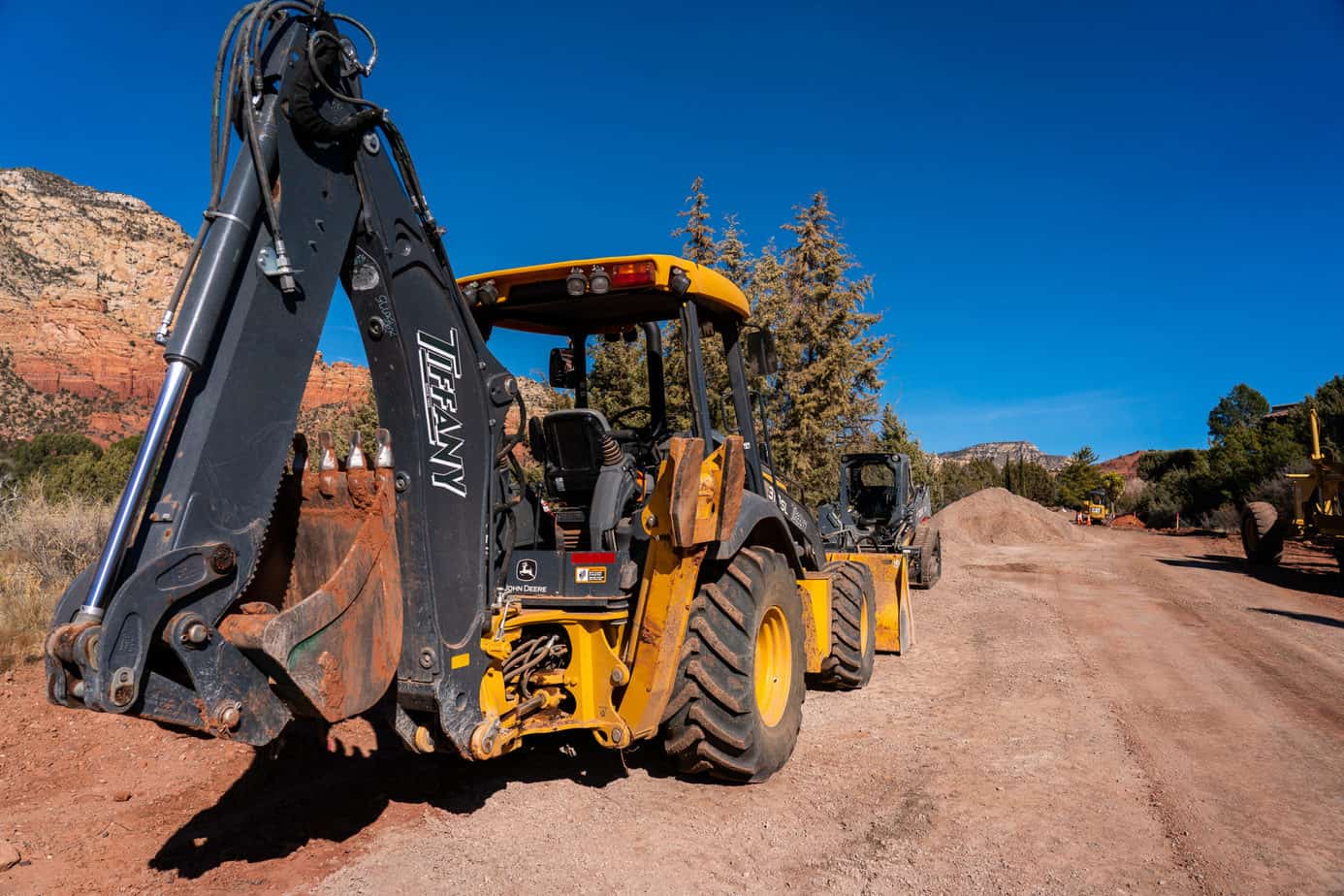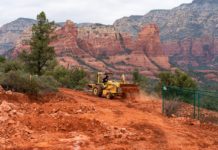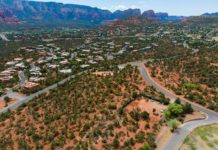
The city of Sedona had to express a bit of mea culpa as part of an ongoing shared-use pathway project.
Karen Keller and her husband, Ed Perry, filed a complaint with the city after contracted crews cut down at least three mature trees and a few saplings within the city-owned right of way but in front of their home on Sanborn Drive.
They were removed as part of the design phase of the Thunder Mountain/ Sanborn Roadway, Shared-Use Path and Drainage Improvement project. And while many of the rights of way vary throughout the city in terms of width, Sanborn Drive’s right of way is 60 feet wide.
“Unfortunately in this case, we didn’t realize the change was going to be as impactful as it was felt to be by this adjacent property owner,” City Engineer Andy Dickey said during the Sedona City Council meeting Tuesday, Jan. 12.
He went on to say that it’s unfortunate when there is a breakdown in communication during any project that may impact residents.
“We make our best effort to reach out to folks and work with them on issues throughout the project corridor,” he said. “I don’t want to make excuses but it is difficult when you’re talking about 90 developed properties. I really wish we could reach every single one of them.”
The city has agreed to replace the trees with mature ones on the Keller/ Perry property adjacent to the shared-use path. Members of council expressed their desire to ensure that in paperwork that goes out to the public that it’s clear that the scope of work in any project is subject to change, even once the design phase in complete.
A city report states that during plan development, staff determined that expansion of roadway and shared-use path improvements on the south side of the road, just east of Sunshine Lane, would have a significant impact on the area to the south of the roadway in this area.
“This would have left a scar on the hillside, including the need to excavate the hillside area, remove trees/vegetation, and construct a retaining wall,” the report states. “Upon completing further analysis, it was determined that moving the alignment of the road to the north would allow improvements to remain in the public right of way and eliminate the impact to the south of the roadway. The change to the roadway alignment was determined to be the best direction for the project and was implemented as final plans were developed.”
The report also points out that there was public outreach regarding the project. This included:
■ In July 2019, letters were mailed to property owners north of State Route 89A, between Coffee Pot Drive and Southwest Drive. This letter described this project and invited the public to share ideas and comments for the design of the project. The letter also showed the project’s design/construction timeline.
■ Pre-pandemic: A “knock and talk” was performed for all project corridor properties west of Rodeo Road in late January and early February.
■ Post-pandemic: Precautions were taken and packets containing letters, project information, and plans were hung on doorknobs throughout the project corridor east of Rodeo Road from late March through mid-May.
■ Site-specific plans and letters requesting temporary construction easements were sent by certified mail to 21 property owners between early June and early July.
Of the 90 total developed properties along the proposed pathway corridor, whether temporary construction easements were being requested or not, Dickey said 28 expressed support, 11 expressed opposition, five had no opinion, and 46 never responded to outreach efforts.
Dickey said the city has no record of communication with Keller nor Perry regarding this project prior to the removal of the trees.
During public comments, an often-emotional Keller said she has lost trust in the city following the removal of the trees. She said that none of the paperwork they received shows changes to the pathway in front of their property and that her husband had talked to someone from the city and no changes were mentioned.
Keller said that when she saw the trees had been cut down she went “into shock and heartbreak.”
“If we knew this was the proposal, we would have adamantly rejected it,” Keller said. “We would not have accepted it. We didn’t fight it or contact people asking them not to do it because it seemed it might be a healthy thing to have a biking and walking alternative.”
Like others on council, Mayor Sandy Moriarty apologized on behalf of the city for the mistake but added that the project will continue to proceed.
“We wish it hadn’t of happened but it did happen and we will do what we can to make up for it,” she said. “But what we can’t make part of the procedure is that we’re going to stop work every time we get a complaint. That we can’t do. The other thing we can’t do is say we’re going to go back and change the design because we heard a complaint. If we start doing that, I can guarantee you we will never do anything.”





















